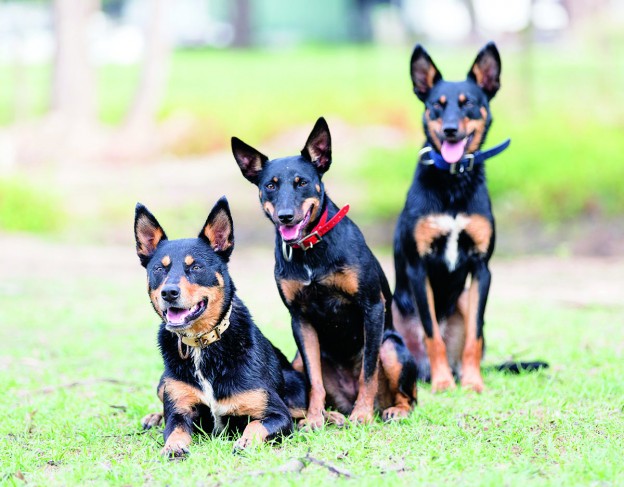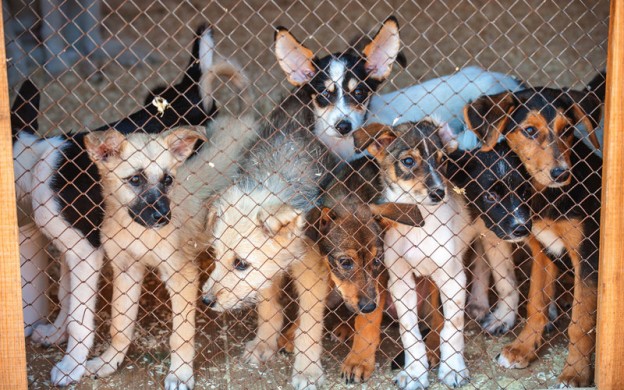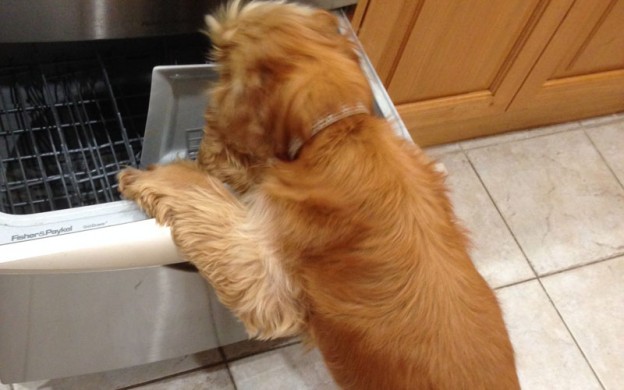
For most of us, our pets are integral members of our family and we simply could not imagine our lives without them. Why is it then, that so many pets are surrendered each year? Millie Chandler reports on abandoned animals.
Australia has one of the highest rates of pet ownership in the world, with over two-thirds of households owning a pet. And why not? The health benefits of owning an animal include a reduction in stress levels and improved mental health and wellbeing.
Pets are also fantastic companions and lifelong friends. Why is it then that around 400,000 dogs and cats are given in to animal shelters or pounds? The University of Queensland is desperate to find the answer to this very question, and through its Centre for Companion Animal Health, is becoming a pioneer in researching this serious problem.
Researchers at the centre believe that if they can better understand the reasons why pets are surrendered, they can then develop and implement solutions to prevent the number of unwanted pets in Australia.
According to the RSPCA,a pet can end up at an animal shelter for two reasons: either its owner has willingly given it up; or it is picked up as a stray on the street. Once at the animal shelter, the teams there are dedicated to finding it a new home, but unfortunately, those dogs and cats that are not adopted are destroyed.
Reasons for surrendering pets
Luckily for the animals, Queensland psychologist Tamzin Barber is trying to determine the reasons and factors why an owner would surrender their pet. Barber is investigating how a person can go from being an enthusiastic pet owner to making the decision of giving the pet up.
Our approach is to look at the health and behaviour of abandoned or surrendered pets, as well as the owners knowledge, bond with the pet and expectations of the pets behaviour, Barber tells Dogs Life. The study will provide answers which will contribute towards reducing the numbers of owners who find they have to give up a pet. This, in return, will reduce the numbers of innocent dogs and cats that are killed simply for being unwanted.
But what makes pets unwanted in the first place? Jane Speechley from RSPCA Australia states that some of the most common reasons pets are abandoned are because the owners don’t have time for a pet, they find they cannot afford basic vet care or the expenses involved in owning a pet, their pets no longer fit into their lifestyle, or they move to an apartment or unit that doesn’t allow pets.
The Queensland governmenthas implemented some strategies in their July 2007 discussion paper, with the hope of counteracting the number of abandoned pets in Australia. These include education, registration, identification and desexing.
Education: To improve responsible pet ownership and increase knowledge of the commitment and costs required in owning a dog or cat, education is vital. Similarly, some pet owners are not aware of their options or have conflicting views about their options when thinking about surrendering their pet. As stated by the Queensland Government in its July 2007 discussion paper, Successful implementation of any unwanted cat or dog management initiative will be highly dependent on the supporting educational material. The community needs to have better access to information about their rights and responsibilities in terms of animal management.
Registration: This would provide a link between owner and pet and would allow for the authorities to reunite the owner with their animal. Registration would also cut down on involuntary abandonment and also removes the anonymity of owners who surrender their dogs and cats.
Identification: This goes hand-in-hand with registration. Identification allows the authorities to differentiate between lost and surrendered animals. Putting a collar/name tag on your pet is a great way for people to identify them (especially from a distance). However, these can be lost or removed, so microchipping is the best way to keep track of your pets. A microchip is a small capsule implanted under the skin of the animal, which has a unique number that can be read by an electronic reader. These microchips last the lifetime of the pet and offer security for pet owners.
Desexing: Having your animals desexed deals with the issue of unwanted cats and dogs being born. Desexing is a simple operation performed by a vet under an anaesthetic, where the male animals are castrated and female animals have their ovaries and uterus removed. The average cost of desexing your pet is around $160 for a male dog and $230 for a female dog ($80 for a male cat and $140 for a female cat). This may seem expensive, but it is nowhere near as much as raising a litter of puppies or kittens. Additional benefits to desexing your pets are that they are less likely to be aggressive, mark their territory, be prone to wandering, and will be at less risk of developing certain cancers.
Does pet registration work?
The Queensland Government is also trying various approaches to managing surrendered pets. In its paper, Managing Unwanted Cats and Dogs, it states that of the 157 Queensland local councils, 124 have a dog registration system in place, with 11 of these also requiring cat registrations. All 124 councils require identification of registered animals.
Animal-welfare groups, such as the RSPCA and Animal Welfare League (AWL), play a vital role in animal management and wellbeing. They develop comprehensive educational programs, support animal management outcomes by accepting and caring for surrendered and stray animals, and provide animal adoption services. Just one example of this is the RSPCA Educational Mobile Unit, which provides a mobile classroom to deliver education on animal care, along with the AWLs educational team, who visits schools.
Animal Aid, an organisation dedicated to retraining abandoned animals, notes that to increase the number of animals being saved, the stigma attached to adopting rescued dogs and cats need to be broken down. In the majority of cases, pets are not surrendered because they were bad, but because their owners bought or received pets without thinking about the time, effort and expense involved in keeping an animal.
Many of the animals that come to RSPCA shelters are there because their owners can no longer look after them, Speechley tells Dogs Life. There are a number of reasons why animals that are offered for the RSPCA make fantastic pets.
Benefits to adopting a pet
There are many plusses to adopting an abandoned animal. Pets from most animal shelters or rescue services are checked by a veterinarian and temperament-tested so they know how to find the very best home for them, along with the fact that all pets are already microchipped and desexed.
Also, the choice of animals from animal shelters is copious, coming in all shapes and sizes, with purebreds as well as crossbreds. Not only this, but when you adopt a pet from an animal shelter, you are taking home a loving new member of your family, and you know that you have saved its life, along with reducing the number of unwanted pets in your community.
Unwanted pets also pose a serious wider social and environmental problem. The Department of Primary Industries and Water state that surrendered pets can kill native wildlife, out-compete native wildlife for food and shelter, and introduce diseases of which native wildlife are not immune. Cats are natural-born hunters and have been well documented to diminish native birds and other wildlife. Feral cats have a significant impact on ground birds and small native mammals, and they have also thwarted attempts to re-introduce threatened species back into areas where they have become extinct (the cats simply hunt and kill newly released animals).
Similarly, feral dogs can cause substantial losses of livestock in rural Australia. [They also] prey on native mammals and birds, and may also compete with native predators, such as quolls, for food and other resources, states National Parks NSW.
This research leaves room for an intervention strategy to be employed with new or would-be pet owners, where they can identify what they expect from their pet and be educated on how these expectations may or may not be met, Barber says. Hopefully, with sufficient research and education, we may be able to decrease the incidences of this serious social problem.







